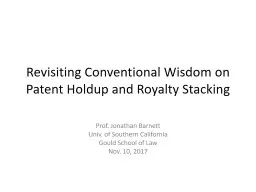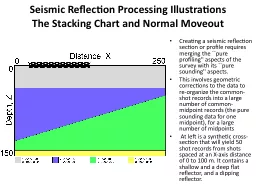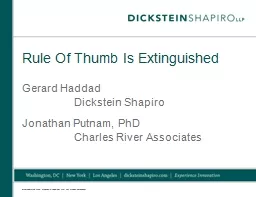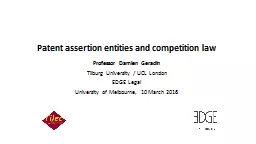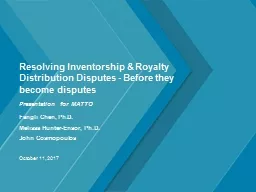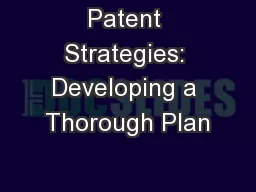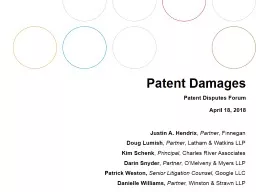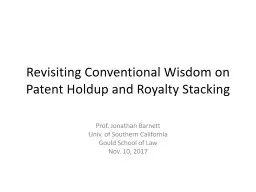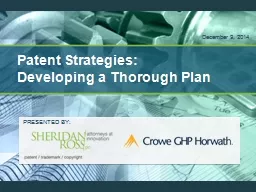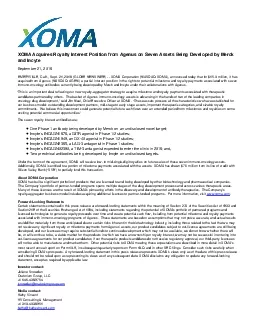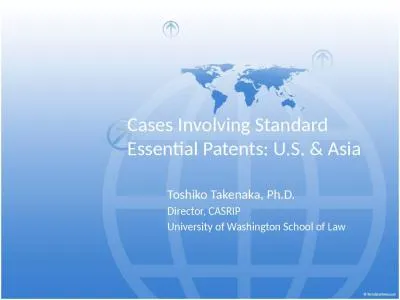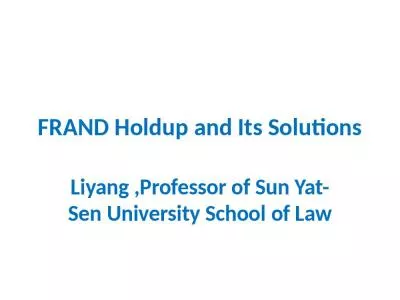PPT-Revisiting Conventional Wisdom on Patent Holdup and Royalty Stacking
Author : alexa-scheidler | Published Date : 2018-03-20
Prof Jonathan Barnett Univ of Southern California Gould School of Law Nov 10 2017 Agenda Patent Holdup and Royalty Stacking Theories Theory Meets Policy The Big
Presentation Embed Code
Download Presentation
Download Presentation The PPT/PDF document "Revisiting Conventional Wisdom on Patent..." is the property of its rightful owner. Permission is granted to download and print the materials on this website for personal, non-commercial use only, and to display it on your personal computer provided you do not modify the materials and that you retain all copyright notices contained in the materials. By downloading content from our website, you accept the terms of this agreement.
Revisiting Conventional Wisdom on Patent Holdup and Royalty Stacking: Transcript
Download Rules Of Document
"Revisiting Conventional Wisdom on Patent Holdup and Royalty Stacking"The content belongs to its owner. You may download and print it for personal use, without modification, and keep all copyright notices. By downloading, you agree to these terms.
Related Documents

